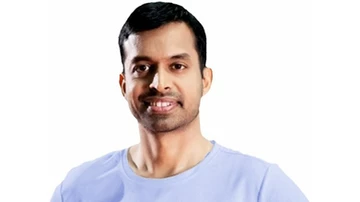Physical Literacy can Redefine Success in Sports
National Badminton Coach Shri Pullela Gopichand shares with Amit Malik on how India can become a sporting nation by adapting Physical Literacy.
Amit Malik (AM): What does a sporting nation looks like?
Pullela Gopichand (PG): A sporting nation would be one where each and every individual looks at themselves and tries to improve their performance continuously. It is where every child is physically literate and the best of them get the opportunity to play sports professionally and win at the highest level. Rest of the others also continue to remain active throughout their lives.

It’s a nation where sporting performances are looked on with pride. It’s a nation where people are not only interested in world-level sports but also into community level sports or any other recreational activities which will help them to lead active and healthy lives. It is crucial to analyse and leverage the links between families, communities, localities and cities and how they engage in a variety of physical activities, including sports, to truly transform into a sporting nation.
AM: What connects you to Physical Literacy?
PG: The fact that many people drop-out of sports because it is very competitive and the reason for such drop-outs is not that these people stop enjoying a sport; rather, it’s because a culture of referral excellence makes it difficult for them to participate in sports.
Physical Literacy for me is an individualistic concept – which is ultimately a competition of us against us, me against me, and you against you. It talks about the journey of leading a fit and active life throughout a lifetime. It is a concept which emphasises the connection between body and mind in taking responsibility for one’s health and fitness all through life.
AM: How can Physical Literacy contribute to the making of a sporting nation? What should be a layman’s understanding of Physical Literacy in the Indian context?
PG: We call the ability of a child to read and write the alphabets, words, sentences as alphabetic literacy, while being able to calculate using numbers is called numeric literacy. Similarly, the understanding and mastering of fundamental movements like crawling, walking, running, jumping will be called Physical Literacy. But, Physical Literacy is also about everyone learning to enjoy, be confident and stay motivated enough to remain physically active and take responsibility for their health. Mastering movement skills as children helps us engage in physical activity better as adults.
India, as an emerging nation, has made great strides in terms of alphabetic and numeric literacy, but has lost out on matters of physical literacy. And today there is a huge percentage of the population who can’t perform even basic movements and that is detrimental to the development of the nation.
An individuals who fail to explore the boundaries of their complete being, cannot be a visionaries. From that perspective, it is very important for us to start looking at physical development as an important aspect of our overall development.
AM: Can Physical Literacy redefine success of children in sports?
PG: Yes, Physical Literacy can redefine success in sports. The journey is an individual’s journey – this statement is enough to say what Margaret Whitehead also supports in her philosophy about Physical Literacy. Physical Literacy is beyond your professional career, it is beyond your competitors, it is about yourself – it is a journey that continues from birth till death. Thus, success through Physical Literacy can be through personal excellence and not referential excellence. Thus, Physical Literacy covers much more than what sports talks about.
AM: Who are the key stakeholders, who may impact Physical Literacy adaptation in India? What key roles do they need to play?
PG: Parents, individuals, schools, education system and the Government are very important stakeholders. However, the key is that every individual citizen is important. Everyone should consider taking it up as an inward journey. But we need to be smart enough to consider the challenges of space, time and resources while planning our Physical Literacy journey. People who are building cities and schools should make available opportunities and space for physical exercise and physical activity. Physical movement should be inculcated as a daily practice at home, school and in the community for children and adults. Physical Literacy should not be limited to school, it should be part of home, community and workplace as well. A culture of being fit and active should prevail at all places.
AM: What is your message to the nation
PG: Each one of us should reinforce the fact that sports and Physical Literacy are important for everybody. And we should start acting upon our promises, make pledges, encourage people to be more active and help them understand that sports and Physical Literacy are particularly important for children. We need to collectively identify the gaps in our curriculum which, limits children’s ability to engage in sports and physical activities to their fullest potential. The Parliament should debate about the future of sports in India. All lawmakers and policy makers should create ways and means to make sports accessible for everyone in our country.
About the Interviewer-
Dr. Amit Malik
Vice President – Strategy,
Knowledge Management & Partnership at
ELMS Sports Foundation.
